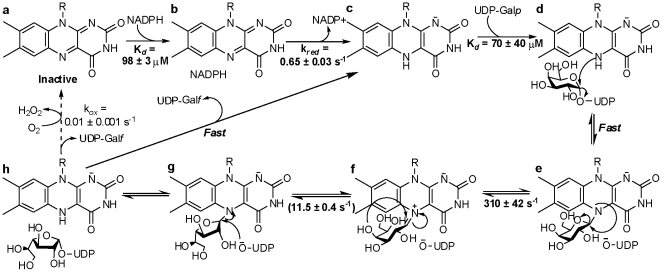Figure 10. Chemical mechanism of TcUGM.
The reaction requires the oxidized flavin cofactor (a) to be reduced for activity. First, NADPH binds to the oxidized enzyme (b), and only after the flavin is reduced (c) will UDP-Galp bind (d). The flavin then acts as a nucleophile attacking the C1 of galactose and forming a flavin sugar adduct (e), which occurs rapidly (f). This is followed by ring opening and recyclization (g). The rate limiting step in the reaction corresponds to either galactose isomerization or reattachment of the UDP (f to g). We postulate that the rate limiting step is the isomerization step. The final step is release of UDP-Galf, which occurs rapidly. The enzyme can proceed to the next reaction cycle or be slowly oxidized by molecular oxygen (h to a).

